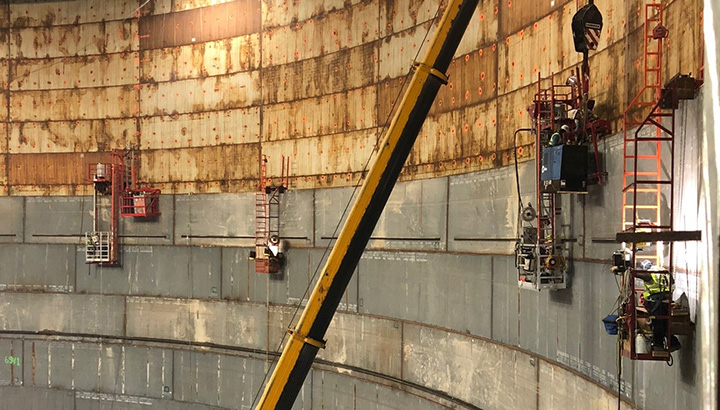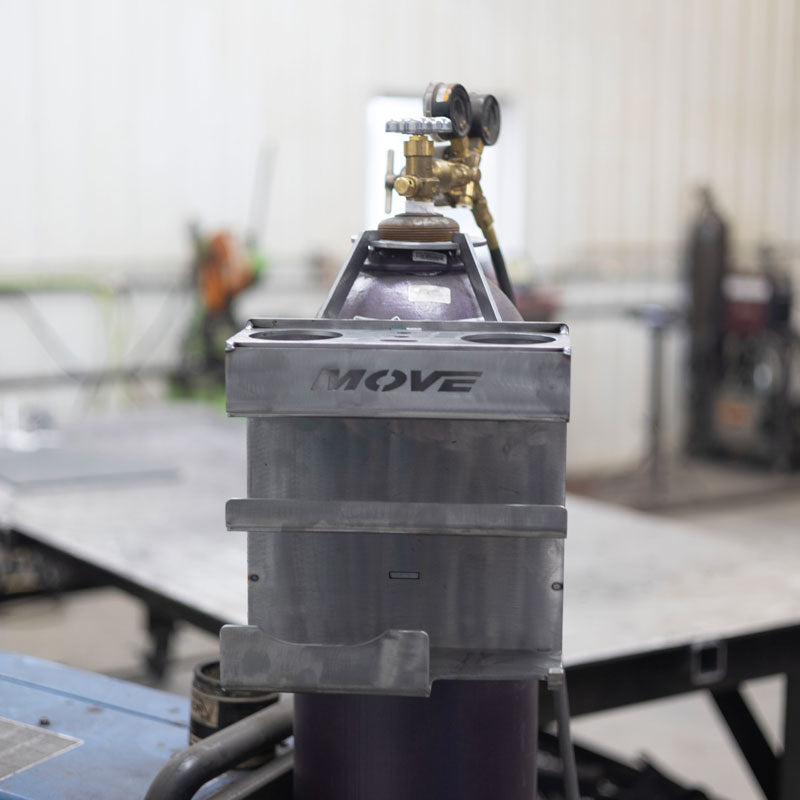Specialist Tank Welding Evaluation Solutions for Quality Assurance and Compliance
Expert storage tank welding evaluation solutions stand as the cornerstone of high quality control and compliance measures embraced by markets. From thorough inspections to sophisticated strategies, the world of tank welding inspection uses an advanced landscape of methods aimed at promoting standards and mitigating dangers.
Importance of Storage Tank Welding Assessment
Making sure the quality of container welding via careful evaluation is important in keeping structural stability and avoiding prospective risks in commercial settings. Tank welding plays an important role in various industries, consisting of oil and chemical, production, and gas handling. The structural stability of tanks is critical to avoid leakages, spills, and various other dangerous cases that can lead to ecological damage, economic losses, and even threaten lives.
Through strenuous evaluation procedures, welding flaws such as fractures, insufficient combination, and porosity can be determined and fixed quickly. Assessments also help make sure compliance with sector criteria and policies, giving a level of guarantee concerning the quality and safety and security of the welded storage tanks.
Regular inspections not only boost the total top quality of tank welding but additionally add to the durability and reliability of industrial devices. By finding and dealing with concerns early on, companies can prevent pricey repair services, downtime, and prospective accidents, ultimately protecting their procedures and track record.
Advanced Evaluation Techniques
Carrying out innovative modern technologies improves the accuracy and effectiveness of examining container welds in commercial settings. One sophisticated technique that has changed container welding examination is making use of automated ultrasonic testing (AUT) AUT systems make use of robot arms equipped with ultrasonic probes to check welds swiftly and properly, providing thorough information on weld stability. This method gets rid of human error and makes certain thorough insurance coverage of welds, boosting the general top quality of assessments.
Additionally, phased variety ultrasonic screening (PAUT) is an additional innovative examination strategy gaining popularity in container welding assessments. Tank Welding Inspection Service. PAUT permits precise control over the ultrasonic beam of light angle and focal point, making it possible for assessors to discover and characterize problems with high resolution. This strategy is especially effective in checking intricate geometries and can supply detailed imaging of weld problems for thorough analysis
Along with AUT and PAUT, advanced radiographic screening approaches, such as electronic radiography, are being progressively used in storage tank welding assessments. These methods use improved picture top quality, decreased evaluation times, and boosted safety and security contrasted to conventional radiographic techniques. By including these innovative evaluation techniques, markets can guarantee better control and conformity with regulatory criteria in tank welding procedures.
Educated Evaluation Professionals
Effectiveness in assessment methods is vital for guaranteeing the precision and integrity of tank welding evaluations in industrial setups. Trained examination specialists play a critical role in upholding quality assurance standards and making certain compliance with regulatory demands. These professionals go through rigorous training to establish competence in various assessment approaches, including visual screening, ultrasonic testing, radiographic testing, and magnetic fragment screening.
Licensed examination experts are fluent in analyzing codes and criteria particular to container welding, such as API 653 and API 650. They possess the knowledge and abilities to identify welding problems, assess weld high quality, and make informed choices relating to the acceptability of welded joints. In addition, these specialists are educated to operate advanced assessment devices and make use of specialized tools to perform comprehensive examinations of container welds.
Affordable Quality Assurance Solutions

Amidst the obstacles of look these up maintaining high requirements in container welding examinations, the mission for affordable top quality control solutions becomes a critical emphasis for industrial procedures. Executing efficient top quality control steps is important to guarantee weld stability, avoid defects, and promote safety criteria. One affordable solution is the use of sophisticated inspection technologies such as automated welding best site evaluation systems. These systems can enhance the evaluation process, minimize human error, and boost total efficiency.
Along with technological innovations, developing a thorough quality assurance strategy that consists of normal evaluations, documentation, and staff member training can considerably contribute to cost savings in the lengthy term. By spending in training programs for welding assessors and ensuring adherence to market requirements, business can proactively identify issues, reduce rework, and stay clear of expensive fixings.
In addition, outsourcing specific assessment solutions when needed can be a cost-effective technique for companies that do not have the experience or resources in-house. Working together with respectable evaluation firms can supply accessibility to knowledgeable experts and sophisticated equipment without the need for substantial capital expense. Eventually, prioritizing affordable quality control solutions is essential for achieving functional efficiency, conference governing requirements, and providing top notch bonded containers.
Ensuring Regulatory Conformity


Governing conformity in tank welding evaluations is an essential element of making sure industry criteria and safety needs are satisfied. Abiding by governing guidelines stated by companies such as the American Oil Institute (API) and Occupational Security and Health Management (OSHA) is vital to guaranteeing the integrity and integrity of welded tanks. These regulations describe specific requirements for welding procedures, material specifications, assessment techniques, and quality assurance procedures that should be followed to keep operational excellence and protect against potential hazards.
To guarantee regulative conformity in storage tank welding inspections, certified welding inspectors should have a comprehensive understanding of the appropriate codes and requirements. Routine audits and analyses must be carried out to validate that welding procedures and treatments straighten with regulative demands. Furthermore, paperwork and record-keeping are essential components of conformity, giving a clear route of adherence to policies for auditing functions.
Conclusion
Finally, professional container welding evaluation options play an important function in ensuring the quality assurance and conformity of storage tanks. By making use of advanced evaluation techniques and skilled experts, companies can properly keep track of the welding procedure, determine possible problems, and preserve regulatory conformity (Tank Welding Inspection Service). This positive method not just aids in protecting against expensive repair work and downtime however additionally makes certain the safety and security and integrity of the containers
From careful assessments to advanced news techniques, the realm of container welding assessment supplies an advanced landscape of methods aimed at upholding criteria and mitigating dangers.In addition, phased selection ultrasonic screening (PAUT) is one more sophisticated assessment strategy gaining appeal in container welding inspections.Effectiveness in inspection methods is paramount for guaranteeing the accuracy and dependability of container welding assessments in industrial settings. One cost-effective service is the usage of innovative evaluation innovations such as automated welding examination systems.In final thought, expert container welding assessment solutions play an important role in making certain the quality control and compliance of tanks.